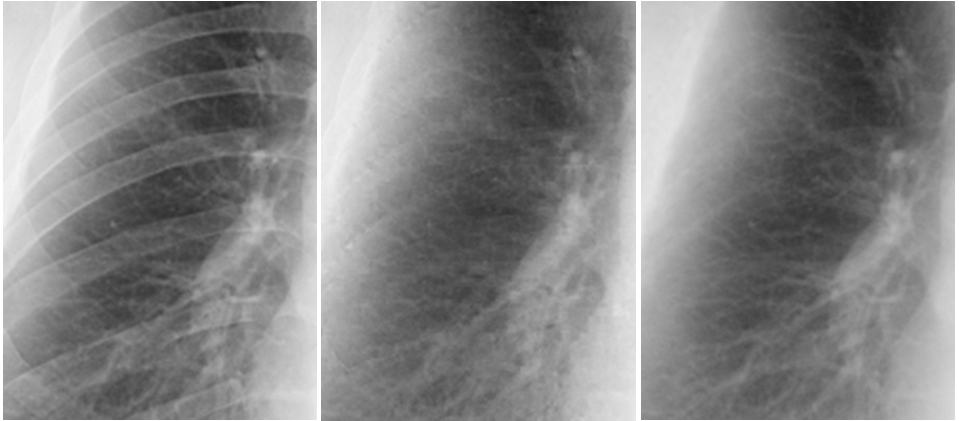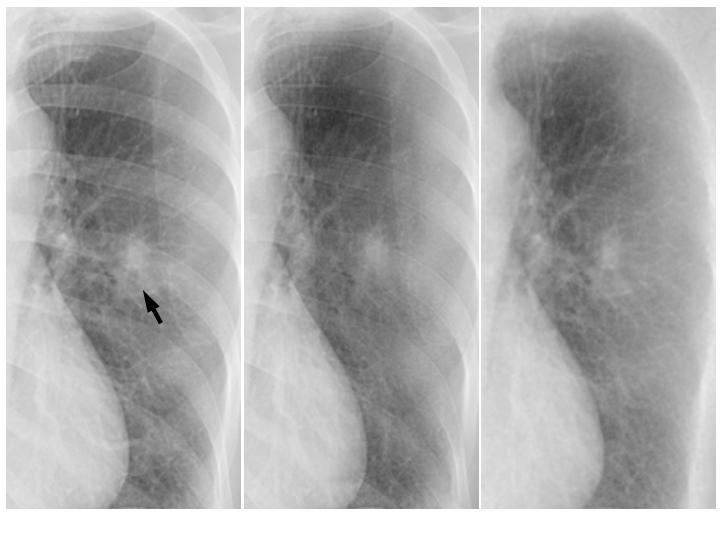Improving the Conspicuity of Nodules in Chest Radiographs by Use of Virtual Dual-Energy Radiography
We evaluated our virtual dual-energy radiography technique based on a massive-training artificial neural network (MTANN) in the improvement of the conspicuity of nodules in chest radiographs. To do this, we used a validation test database consisting of 118 chest radiographs with pulmonary nodules and an independent test database consisting of 136 digitized screen-film chest radiographs with 136 solitary pulmonary nodules collected from 14 medical institutions. When our virtual dual-energy radiography technique was applied to non-training chest radiographs, ribs and clavicles in the chest radiographs were suppressed substantially while the visibility of nodules and lung vessels was maintained. Thus, our virtual dual-energy radiography technique by means of the MTANN could potentially improve radiologists’ detection accuracy of lung nodules on chest radiographs.

Comparison of the original chest radiograph (left), our virtual dual-energy soft-tissue image (middle), and the gold-standardEdual-energy soft-tissue image (right).

Comparison of the conspicuity of a lung cancer in the original chest radiograph (left), our virtual dual-energy soft-tissue image (middle), and the corresponding gold-standardE dual-energy soft-tissue image (right).

